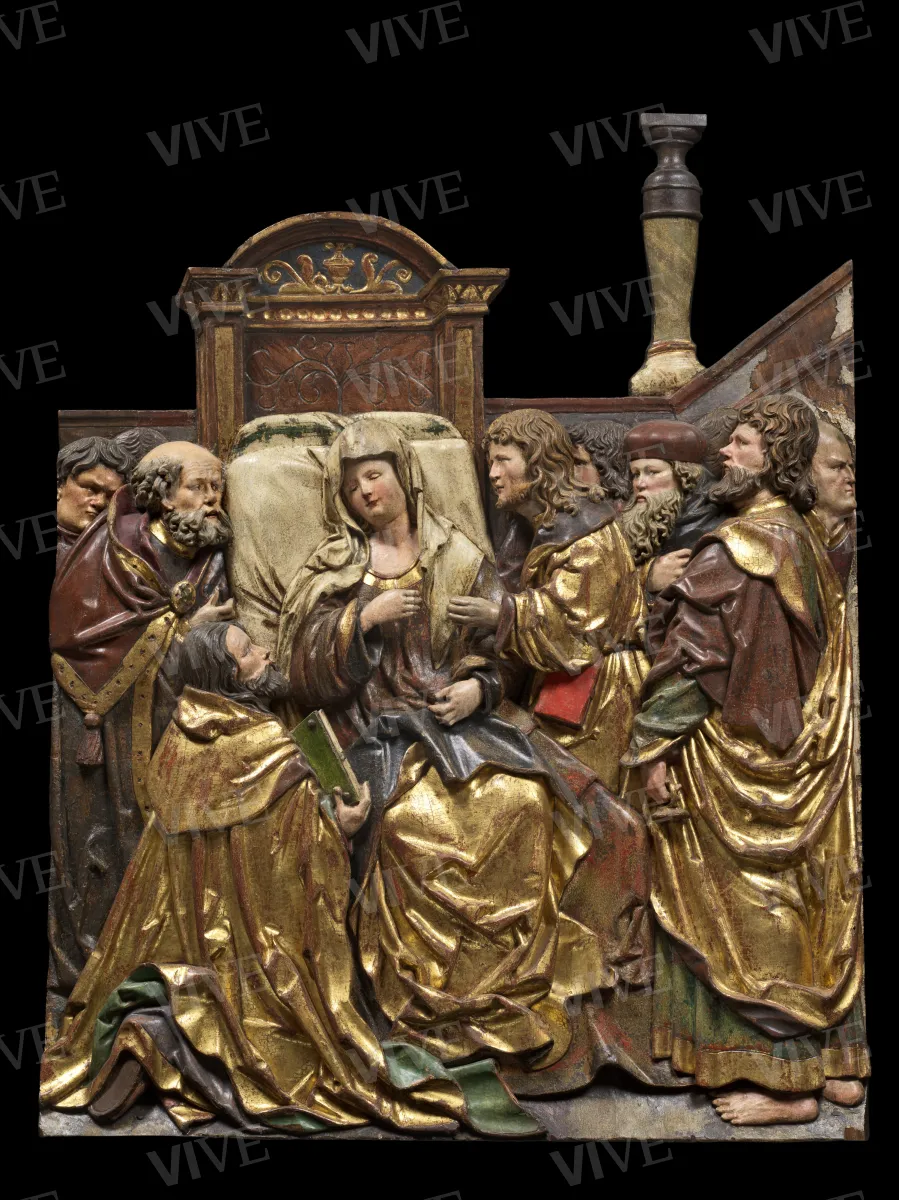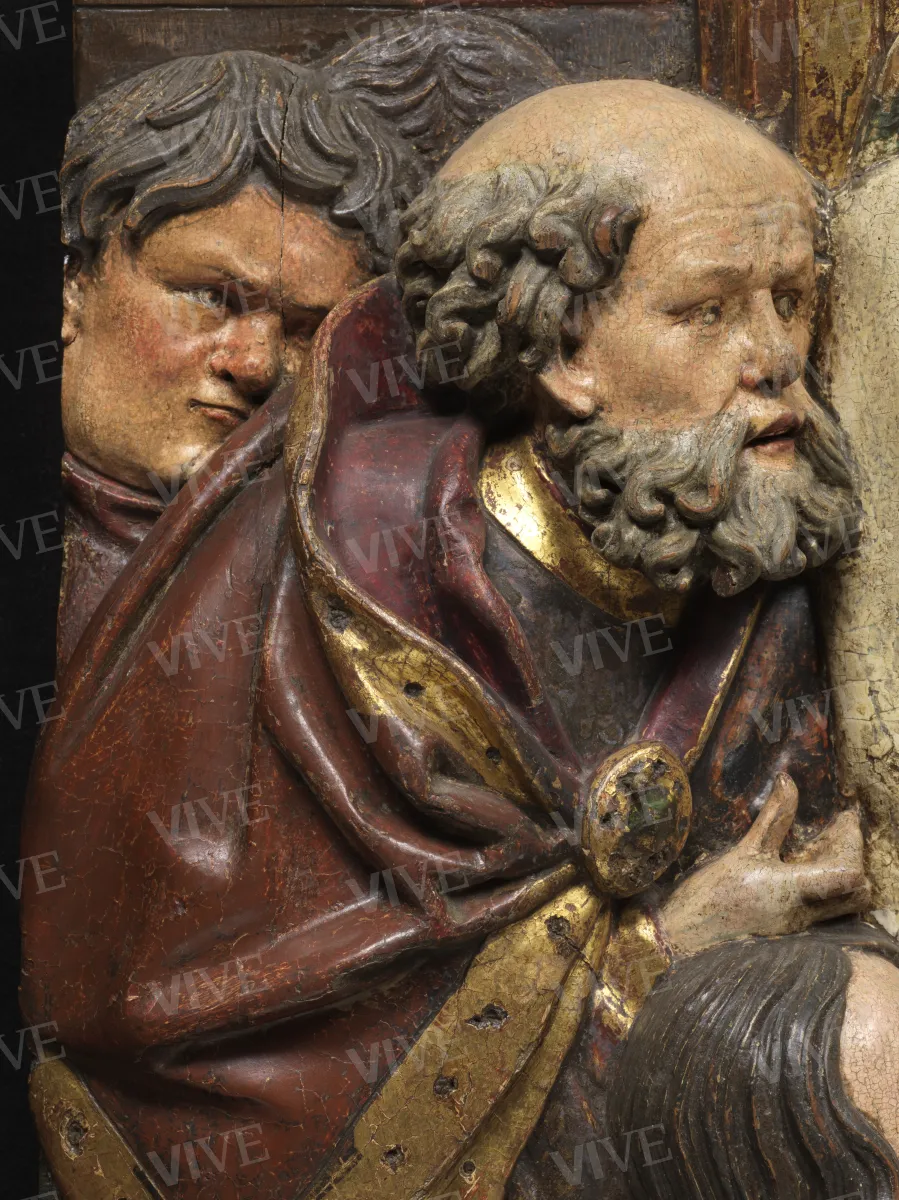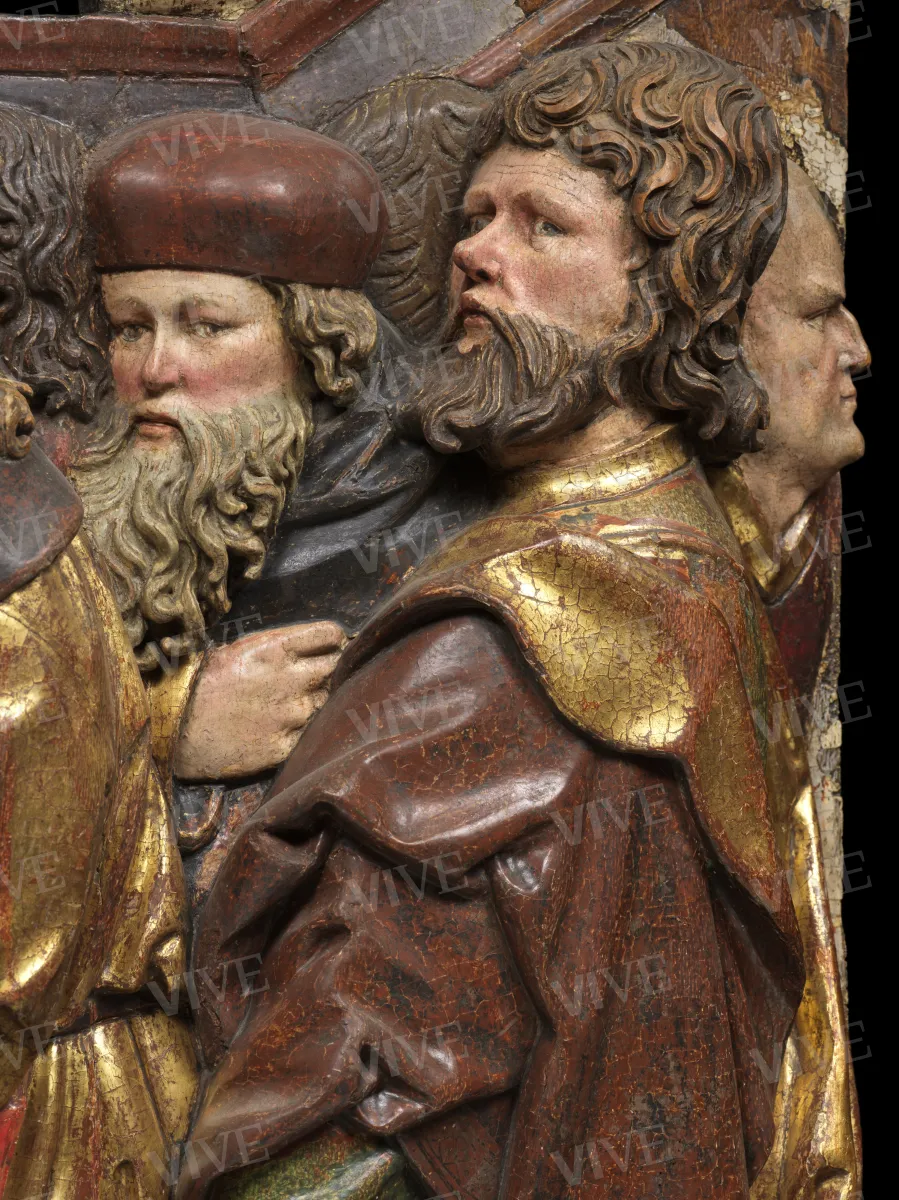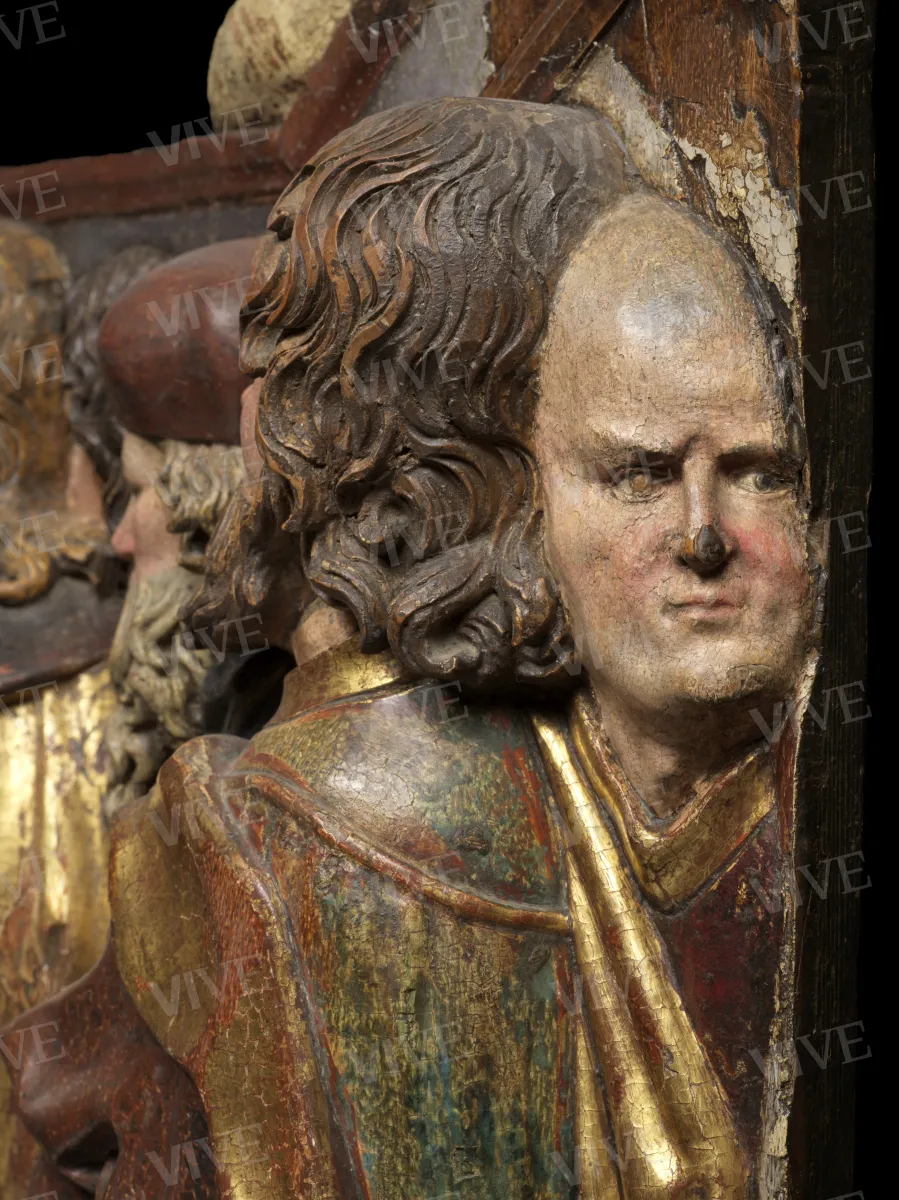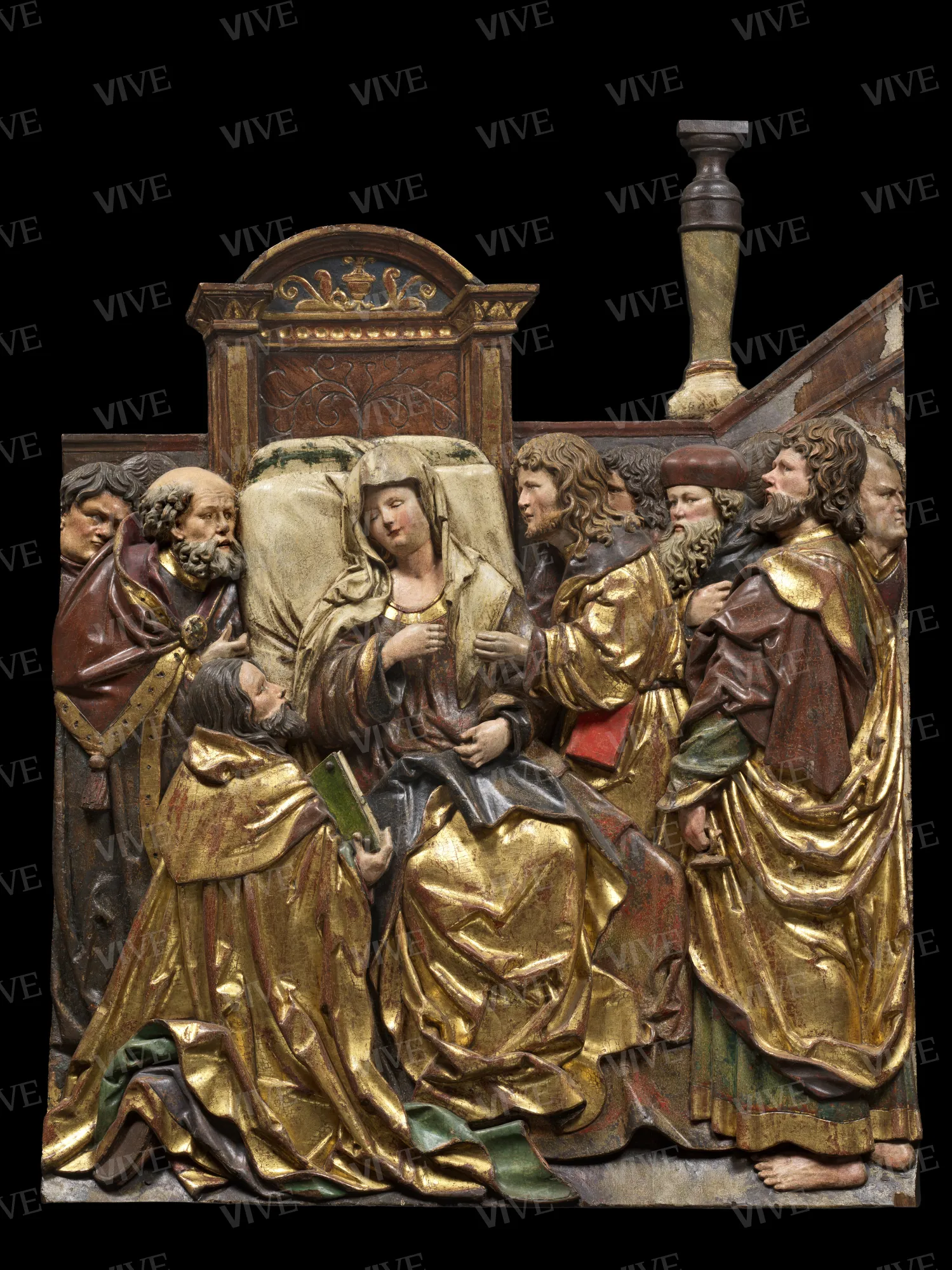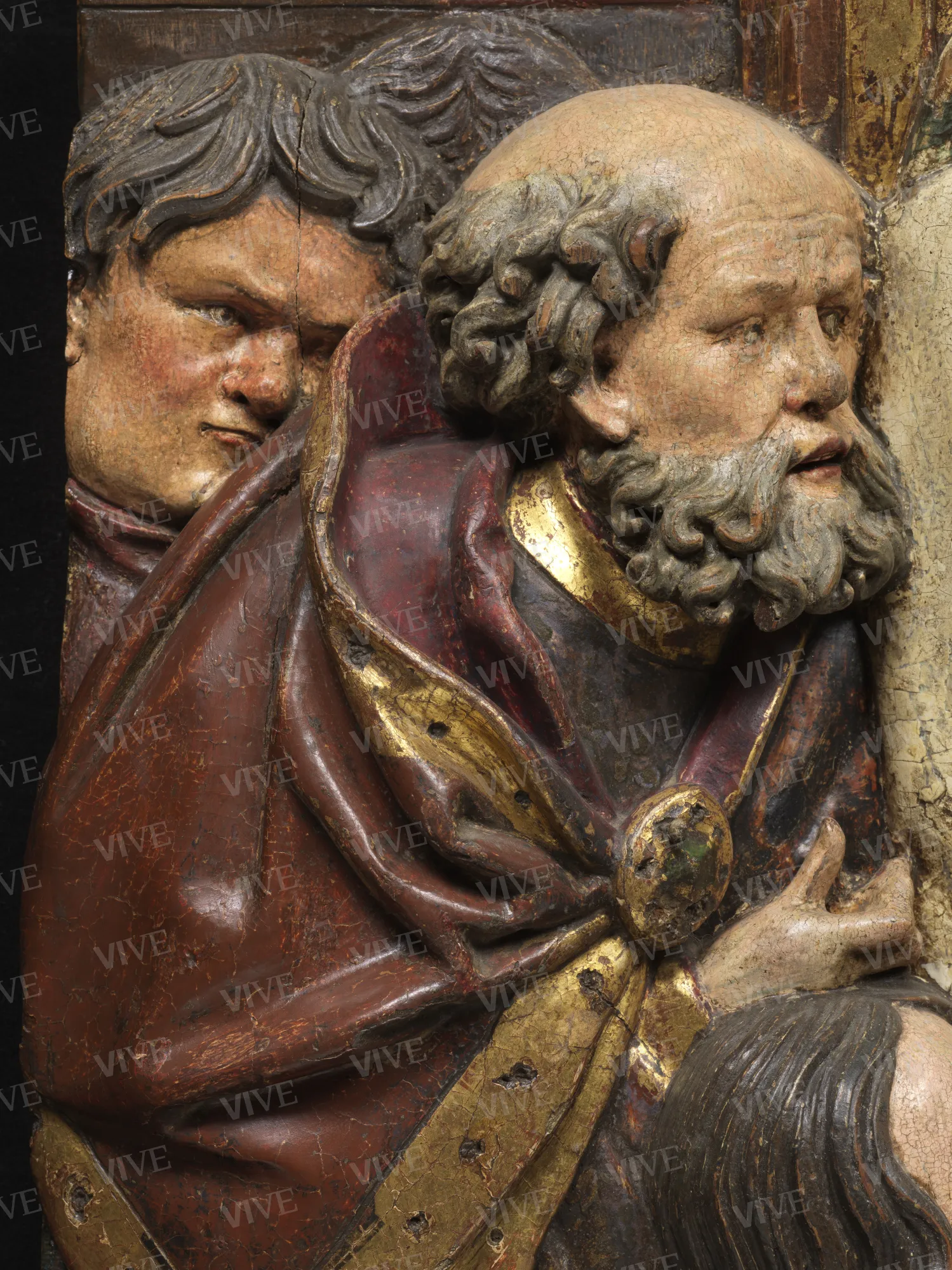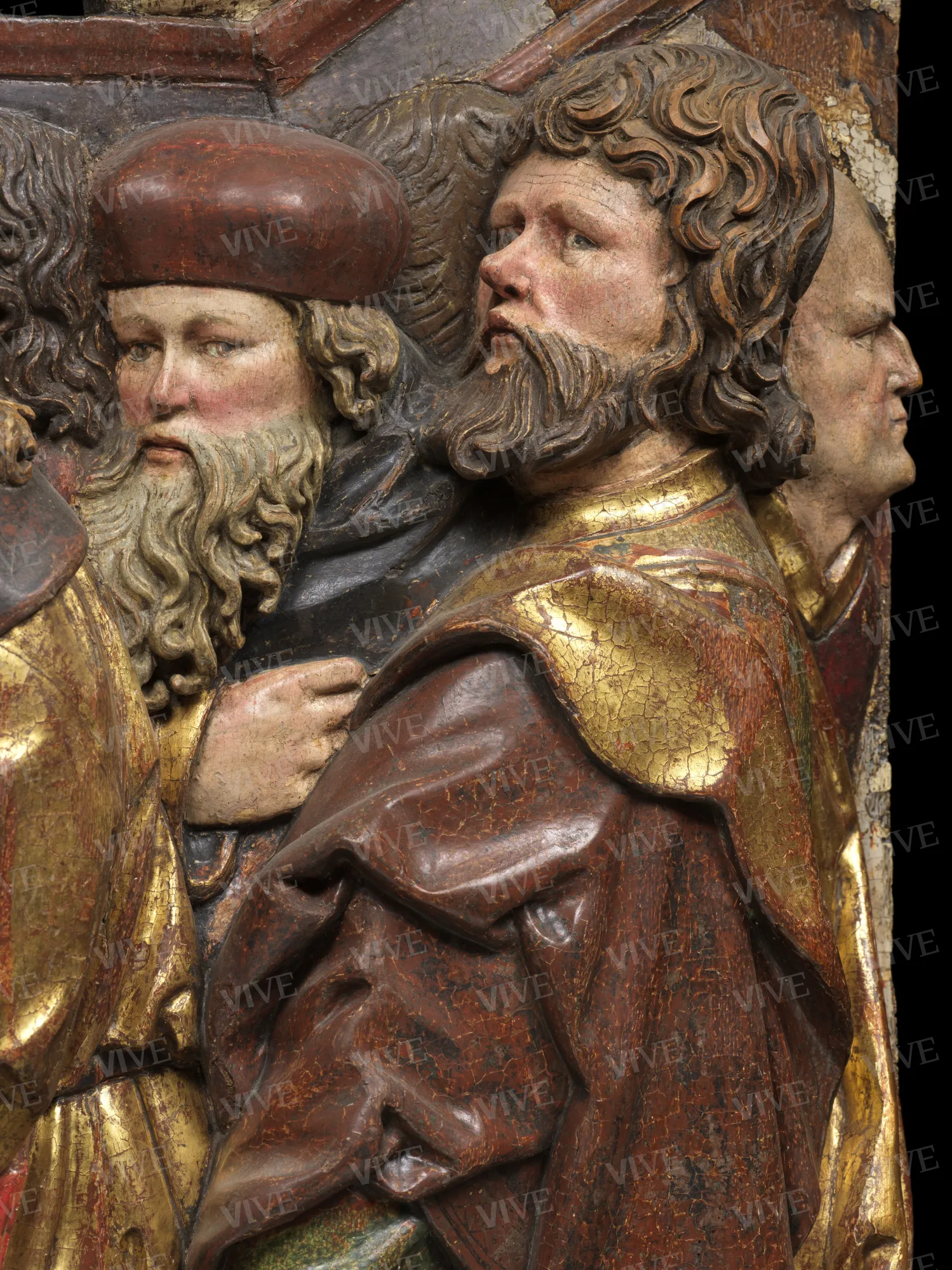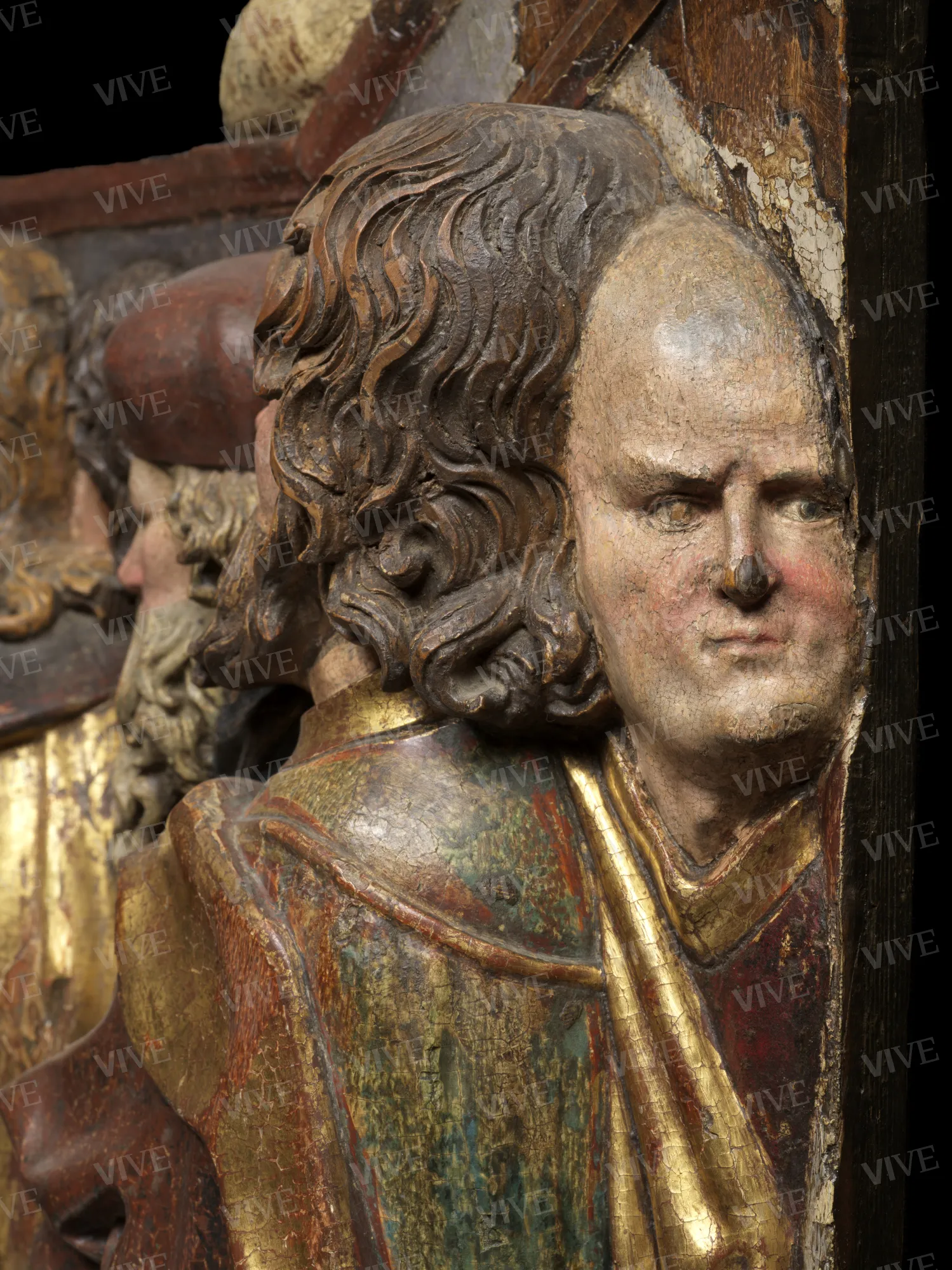Dormition of the Virgin
Hans Burgkmair and Sebastian Loscher C. 1520
This wooden relief, originally part of a folding altarpiece, shows the Virgin dying in her bed, assisted in her passing by ten apostles. The carving was most likely done by Sebastian Loscher based on a design by Hans Burgkmair (now in the Städel Museum in Frankfurt).
This wooden relief, originally part of a folding altarpiece, shows the Virgin dying in her bed, assisted in her passing by ten apostles. The carving was most likely done by Sebastian Loscher based on a design by Hans Burgkmair (now in the Städel Museum in Frankfurt).
Details of work
Catalog entry
The relief, carved in lime wood except for the column, which is made of walnut, entered the Palazzo Venezia collections with the Wurts bequest in 1933: the scene shows the Virgin dying in her bed, assisted in her passing by ten apostles. Among the sorrowful faces of those present, the apostle on the right is particularly striking, with his head covering pulled down over his forehead and his gaze directed towards the observer. The serene face of the Virgin is enveloped in a veil, under which a few strands of golden hair can be seen. With the exception of the loss of some attributes and the loss of metal leaf in several places, the condition is good. The quality of the design and carving, together with the polychromy, make the relief, in the words of Weniger, “perhaps the most important German sculpture in the Wurts Collection” (Weniger 2017, 236).
While Hermanin attributed the relief to the sixteenth-century Tyrolean school (Hermanin 1948, 269), Santangelo believed it to have been made in Augsburg around 1520 (Santangelo 1954, 59), a suggestion that was later shared by Falk (1973) and Fachechi (2011, 132), and substantiated by Weniger (2017, 236), who attributed the work to a collaboration between Hans Burgkmair and Sebastian Loscher, both artists originally from Augsburg. It was Falk who identified the model for the Roman relief in Burgkmair’s drawing preserved at the Städel Museum in Frankfurt (inv. SG 1027; Falk 1973, 23–24). The few differences between the two works concern the attributes. From the photograph of the relief in the Palazzo Venezia published in Falk’s article (1973, 24), it can be seen that Giovanni was not holding the palm branch, as shown in the drawing, but a candle, now lost and possibly not original. The palm branch alludes to the episode in the Marian legend in which the angel, appearing to the Virgin to announce her imminent death, offered her a palm branch from paradise with leaves shining like morning stars: the Virgin gave the branch to John to carry in procession before her coffin (de Voragine 2014, II, 1510, 1512, 1518). In the case of the Wurts relief, the position of the apostle’s hand and that of Mary’s hand resting on her lap suggest that the original attribute was indeed the palm branch. The other lost elements are the aspergillum held by Peter, the thurible waved by the first apostle on the right, and perhaps the long candle that can be seen next to Peter in the drawing.
Falk also compared the Dormition to the relief with the Visitation (private collection) carved after Burgkmair’s design (now in the British Museum, inv. 1929, 0416. 2), which coincides with the Dormition in terms of material, size, and style, and with the Encounter of Anne and Joachim at the Golden Gate of Jerusalem, which entered the Staatliche Museen in Berlin with the Simon Collection (inv. 8174), larger in size but stylistically similar (Falk 1973, 22–23). The scholar suggested that the three reliefs came from the same complex dedicated to Mary, where the scene of the Meeting would have been the initial one (Falk 1973, 24).
Regarding the question of attribution and the author of the carving, it should be remembered that Loscher and Burgkmair had worked together on other occasions, including, in 1522, on the high altar of the parish church of Rauris in Pinzgau (Salzburg), dismantled in 1780–1781, from which the statues of Saints Sebastian and Florian preserved in the church may have come. Although the Austrian origin of the Dormitio had already been argued by Falk, it is the stylistic similarities found by Weniger between the faces of the saints in Rauris and the Roman apostles, particularly in the rendering of the beard and hair, that strongly support the attribution to Loscher of the carving of the statues in Rauris and the Wurts relief (Weniger 2018, 449).
Francesca Padovani
Entry published on 12 June 2025
State of conservation
Good.
Restorations and analyses
2009: technical and scientific investigations conducted by IVALSA-CNR in Florence.
Provenance
Rome, Tower Wurts Collection, 1933
Rome, Museo Nazionale di Palazzo Venezia, 1933, donation by Henrietta Tower Wurst.
Exhibition history
Rome, Museo Nazionale di Palazzo Venezia; Rome, Gallerie Sacconi al Vittoriano, Il collezionismo internazionale nella Roma del Vittoriano, December 7, 2017–March 4, 2018.
References
Hermanin Federico, Il Palazzo di Venezia, Roma 1948, p. 269;
Santangelo Antonino (a cura di), Museo di Palazzo Venezia. Catalogo delle sculture, Roma 1954, pp. 59-60;
Falk Tilman, Altarreliefs nach Entwürfen von Hans Burgkmair, in «Pantheon», 21, 1973, 1, pp. 22-26;
Bracci Susanna, Sacchi Barbara, Le analisi scientifiche sulle policromie, in Barberini Maria Giulia (a cura di), Roma. Il Palazzo di Venezia e le sue collezioni di scultura, Roma 2011, II, pp. 63-67;
Fachechi Grazia Maria, Museo Nazionale del Palazzo di Venezia. Sculture in legno, in Barberini Maria Giulia (a cura di), Roma. Il Palazzo di Venezia e le sue collezioni di scultura, Roma 2011, II, pp. 132-134;
de Voragine Jacobus, Legenda aurea, 2 voll., Freiburg-Basel-Wien 2014;
Weniger Matthias, Sculture e dipinti d’Oltralpe nella Collezione Wurts, in Pellegrini Emanuele (a cura di), Voglia d’Italia. Il collezionismo internazionale nella Roma del Vittoriano, catalogo della mostra (Roma, Museo Nazionale di Palazzo Venezia; Roma, Gallerie Sacconi al Vittoriano, 7 dicembre 2017-4 marzo 2018), Napoli 2017, pp. 215-251, n. 4.8;
Falk Tilman, Hans Burgkmair, der “vernachlässigte“ Altdeutsche, in Augustyn Wolfgang, Teget-Welz Manuel (a cura di), Hans Burgkmair. Neue Forschungen, Passau 2018, pp. 1-27;
Weniger Matthias, Hans Burgkmair und Sebastian Loscher, in Augustyn Wolfgang, Teget-Welz Manuel (a cura di), Hans Burgkmair. Neue Forschungen, Passau 2018, pp. 439-464.

